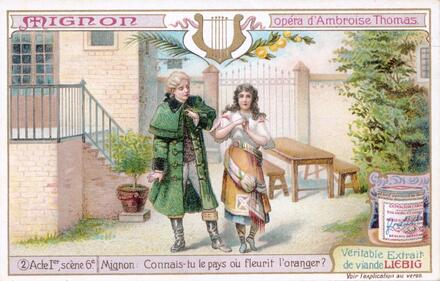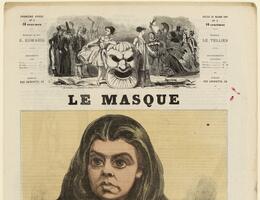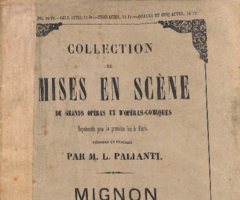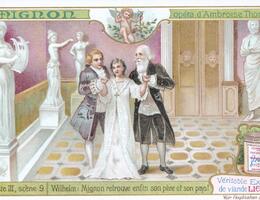Mignon

Opéra-comique en 3 actes créé à l'Opéra-Comique de Paris le 17 novembre 1866.
Nineteenth-century librettists necessarily adapted their literary sources but one would nevertheless be tempted to award the prize for infidelity to Barbier and Carré for Mignon! Indeed, Thomas’s work no longer has much in common with Goethe’s Wilhelm Meisters Lehrjahre, published in 1795-96, on which it was based. Gone is the initiatory, metaphysical dimension of the work, and the theme of sin and guilt (borne unconsciously by Mignon, child of the incest of brother and sister) is also absent. Written for the Opéra-Comique, Mignon was premièred there on 17 November 1866, with Célestine Galli-Marié (Bizet’s first Carmen in 1875) in the title role. Its heroes were meant to embody middle-class values (loyalty and honour) and solve the enigmas they were faced with in their adventures. In that first version, Mignon died; but disapproval of the tragic ending (which he nevertheless kept for the performances given in Baden-Baden in 1869) led Thomas to provide another version, without the unhappy outcome. The music offered what was expected of an opéra-comique: delicately expressive romances (Mignon’s “Connais-tu le pays” to one of Goethe’s most famous poems, Wilhelm’s aria “Elle ne croyait pas dans sa candeur naïve”), the coloratura aria (Philine’s polonaise, “Je suis Titania la blonde”), a Romantic but not sinister setting (eighteenth-century Germany with its forests, villages and castles). Mignon proved very popular, to say the least: on 13 May 1894 it became the first work by a living composer to have been performed a thousand times on the same stage.




